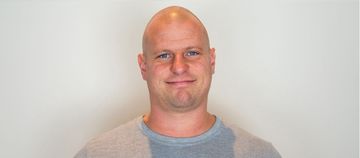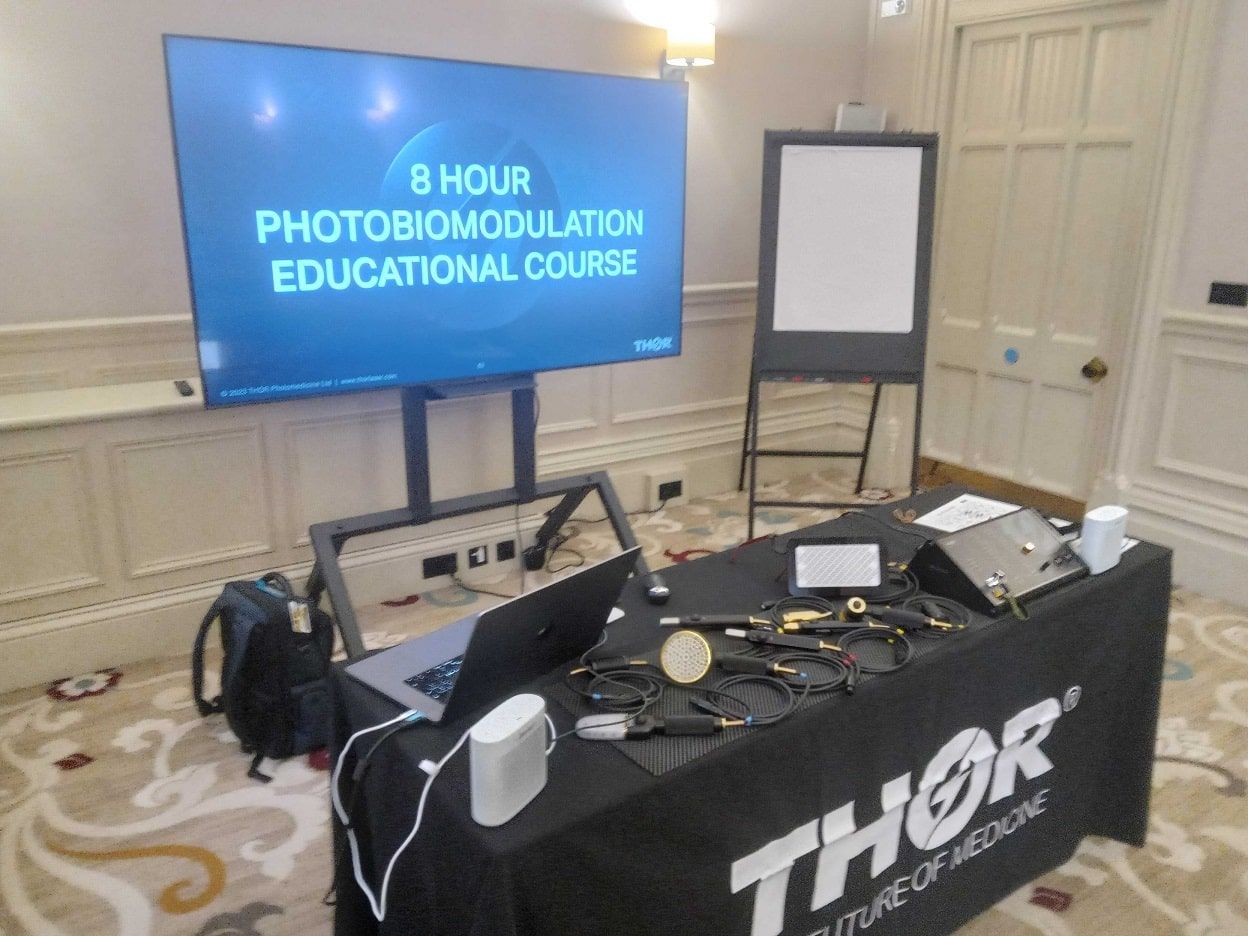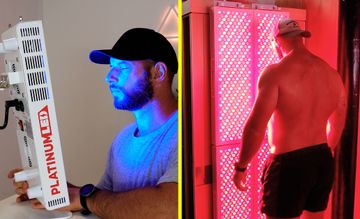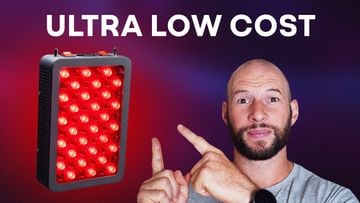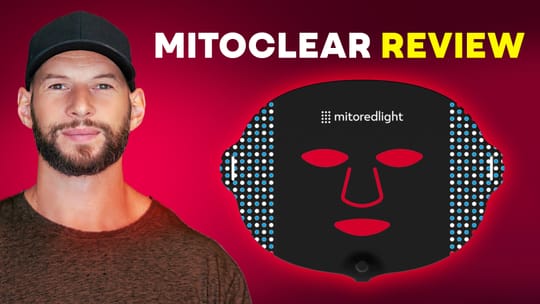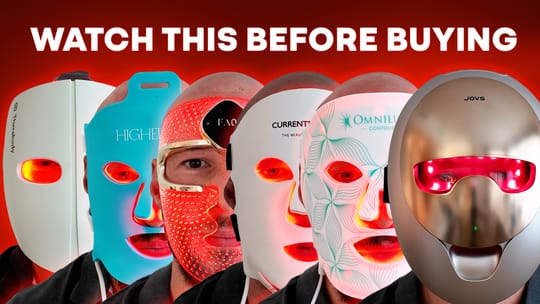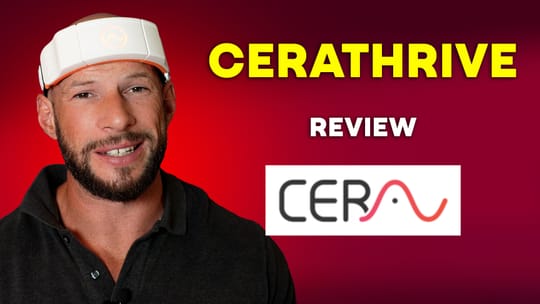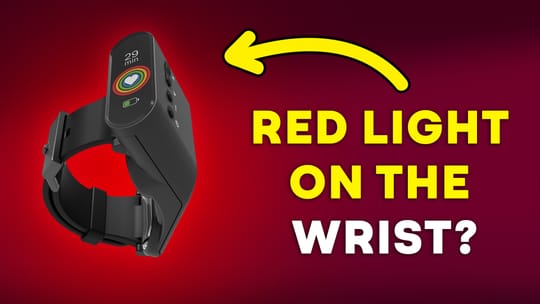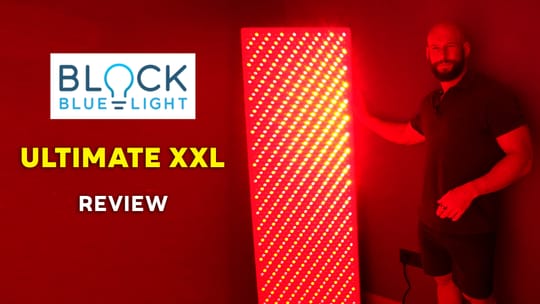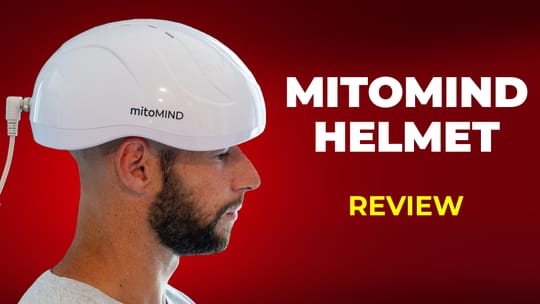I'm Bart Wolbers and I've been working on red light therapy for many years now. A few days ago, I finally got the opportunity to follow one of the main courses in the red light therapy space - or "photobiomodulation" as it's better known formally. I'm talking about James Carroll's Photobiomodulation (PBM Therapy) Training course.
The course takes about 10 hours on a day, starting at 8 A, and finishing at 6 PM (although we did make it later), with some red light therapy-filled breaks in between.
The course was extremely interesting and highly stimulating to an analytical mind like mine. And, even though I've spent so much time in the red light therapy space for many years now, I've learned many new lessons. James Carroll was an excellent teacher and I truly noticed the difference of his almost 4 decades of experience in this space - since 1987.
Here are the most important lessons I've learned from James Carroll's course:
16 Most Important Lessons From James Carroll's Photobiomodulation Course
Below I've listed my 16 most important lessons from attending the photobiomodulation course by James Carroll. Of course, these lessons are my lessons - if you're a beginner in the space or have spent even more time on this topic than I have, your lessons are going to be different.
Let's begin with the exciting journey.
1) Joules/cm2 Can Be A Misleading Measurement Of A Red Light Therapy Dose
Alex Fergus and I have been focusing on Joules/cm2 as a measurement of a red light therapy dose for years now. But, as Alex already found in his YouTube video on the coverage and beam angle of red light therapy panels, those numbers can be highly misleading.
But let's take a detour first.
If you didn't know, the power output of a red light therapy device is calculated in milli-Watts (mW). For instance, the Infraredi Max panel puts out 67 mW per centimeter squared (67 mW/cm2). What matters a lot though, is over which area that light is distributed.
Some companies will claim 50 mW/cm2 or 100 mW/cm2, and they may even be right if you measure those numbers with a spectrometer, but the area affected may be extremely small.
So, if only an area of 0.3 cm2 is exposed to that 100 mW/cm2 dose, and nothing around it, then you're not affecting that great of a tissue area.
The implication of this thesis, is that companies don't just need to state the power output of their products. Also, companies need to mention what area is affected.
I'm not going to list names here but some companies out there market high power output numbers while in reality those products affect a very small area.
2) THOR Is Entering The Red Light Therapy Helmet Space With A New Product
We've been extremely excited with some helmet products that offer red light therapy for the brain lately. For instance, check out Alex's Neuronic video. Alex will also be testing some Vielight products in the near future and I've prepared a blog on the Vielight science that comes out soon.
However, I was most happy to hear that THOR is coming out with a red light therapy product for the brain themselves. I've seen pictures of the product but not the specifications of how it works. But, knowing that THOR attempts to put out the best products on the market, I'm really excited to see some new competition emerging here.
3) You May Not Always Measure Improvements In Healthy Cells With Red Light Therapy But...
Unhealthy cells have an almost immediate response to red light therapy treatments. For healthy cells, that dynamic is a bit different. In the latter case, you don't always see immediate changes in physiological parameters.
But, what does happen is that healthy cells become far more resilient with red light therapy. For instance, a healthy cell treated with red light therapy will have a far different response from a non-treated cell when exposed to a toxin, for instance, or when exposed to a heavy workout.
And that's great news, that also accords to our experience. For instance, in the video where Alex talks about his 5-year experience with red light therapy, he talks about benefits such as workout recovery for an already healthy person. The same is true for me - I don't have any chronic health conditions and never had either. And yet, red light therapy does improve my overall health, such as energy levels, workout recovery, strength and endurance during workouts, and sleep quality. I feel a lot better on red light therapy too.
4) Different Types Of Lasers Exist - Heating And Non-Heating Models
Not all lasers are created equal. Some lasers - such as the different THOR laser applications - are used for health improvement purposes. You can see different THOR laser and LED probes, for instance, that can be used for different applications. Dental red light therapy would be one example, or treating trigger points with a laser.
These THOR lasers are very different from lasers used in surgery. Surgery lasers use the 3,000+ nanometer range. That light spectrum range has extremely high water absorption, which makes it ideal to cut tissues. Of course, in this case, the THOR lasers are made for healing purposes, not cutting, so both goals are diametrically opposed to each other.
But, it's actually the water absorption spectrum difference that determines where the lasers can be used for. In total, there are five classes of lasers. The Class 3b is most frequently used in photobiomodulation and has power output of between 5mW and 500 mW. Class 4 lasers are used in surgery.
5) Join Us For The Photobiomodulation 2024 Conference If You Want To Take An Even Deeper Deep Dive
I will be at the Photobiomodulation 2024 Conference in London, in August that year. There, I will probably be meeting up with tons of scientists in the field, as well as James Carroll and his excellent team.
If you like this topic and going into the nitty gritty of red light therapy, join us there!
6) Spreading The Truth About Photobiomodulation Or Red Light Therapy Is Happening Slower Than Expected
We know that photobiomodulation or red light therapy has extremely impressive effects on health. And, for that reason, we're hearing thought leaders in the space say that it's only a matter of time because everyone uses this modality.
So we thought...
James Carroll said that in the 1980s, after seeing the first results of photobiomodulation, he thought it would only take a few years before every hospital and home would use it. Then, I've heard from Michael Hamblin, a professor at the University of Johannesburg and previously Harvard, that it would only take 5 years before every home had such a device.
That was six years ago...
And right now, most people on the street still haven't learnt about most of the photobiomodulation health effects. Sure, when you look at the trends of Google searches for red light therapy, there's an impressive uptrend. But, getting the word out there takes time.
It also takes tons of time to get people used to the idea that the light in their environment can be a force for healing. In my opinion, when you start to believe that red light therapy will have a huge effect on health, we'll have to remove many of our preconceived notions from our collective minds, such as about architecture or how we live our lives in modern society.
I mean, spending 12 hours a day indoors or having University classes exclusively indoors becomes damaging on a relative level. Admitting that and changing most people in society's perspective around that idea involves some internal resistance.
Hopefully, our promotion of residential red light therapy use will also help out THOR, which focuses mostly on the healthcare system. And, vice versa of course.
Right now, I don't predict that every single home will have a 1,500 LED setup with red and near-infrared light in the next five years. But if we did have that, the world would be a different place, in a very positive way.
7) The Reason Medicine Slowly takes Up Photobiomodulation Is That Medicine Is Conservative
Whether your therapy is taken up by medicine depends on reimbursement codes, the word getting out, white tape, and other factors. Without reimbursement codes, you can get funding when applying for therapy.
And, without convincing the people working at the head of a healthcare system such as the NHS in the UK about the benefits of red light therapy, you can't get a reimbursement code.
Of course, people in the NHS aren't going to work for free as everyone needs to eat. And for that reason, the wheels of medicine are moving very slowly.
Fortunately, very soon there might be an approved reimbursement code for oral mucositis - a side effect of cancer radiology or chemotherapy treatment. And, hopefully, after that more dominoes will fall and photobiomodulation can be adopted much more broadly.
8) I Learned Some New Benefits That Are Astounding, Such As For Age-Related Macular Degeneration
Even though I'm probably spending 10-15 hours a week immersed in studies on photobiomodulation, I still frequently learn new things. In this case, I've learned from James that for eye issues, especially age-related macular degeneration, the evidence is extremely strong that photobiomodulation helps.
Checking some studies, I saw evidence for this thesis (1; 2; 3; 4). I can't give you a treatment protocol, though, as I'd have to look at all available studies. But, these studies do prove that red light therapy can be extremely helpful for eye health.
Right now, I'm personally sticking to getting some indirect exposure of red and near-infrared light when I'm using my red light therapy panel.
Having said that, dry age-related macular degeneration affects hundreds of millions of people. If that condition can be partially reversed, it's really hopeful for the entire planet.
Other conditions where new evidence is emerging are with lymphoedema, Post-Traumatic Stress Disorder, Parkinson's, Opioid excessive use or intentional misuse, and myocardial infarctions (heart attacks).
9) Energy-Production And Lower Oxidative Stress Arguably Explain Why Photobiomodulation Works For "Everything"
Well, photobiomodulation works for almost everything, if you think about it. Whether it's autoimmune conditions that have anecdotal evidence now, such as Multiple Sclerosis, different types of pain such as neck pain, lower back pain, and neuropathic (nerve) pain, muscle and nervous system recovery after workouts, eye health, cognitive function, and everything in between.
The list of benefits of photobiomodulation or red light therapy is almost too impressive. Or is it?
James Carroll claims the primary underlying mechanism explaining these benefits is the lowering of oxidative stress and the consequent upregulation of energy production at the cellular level.
According to James, you have to be skeptical towards any therapy that claims to do everything for everyone. But, in this case, it seems to be almost universally true, simply because the light seems to affect human physiology at an extremely fundamental level.
And, thus, after photobiomodulation, physiology across the board gets healthier and more resilient.
10) For Optimal Treatment In Many Cases, You Need Extremely Good Knowledge And Experience With Human Anatomy
Let's say you're treating the brachial plexus or the radial nerve in the arm. Alternatively, you're using a laser on the cartilage and the ligaments of the knee to delay the need for surgery.
Or, you want to treat some trigger points in the neck. And as a painkiller, you'll want to target cranial nerves C1 and C2. All great, but you'll need to have more than basic knowledge of anatomy to achieve the best results here.
The applications of THOR Lasers come to mind here. So, for spot treatment, and not full body treatment, you may still need a clinician to help you. Because the correct application of the lasers does require you to have sufficient knowledge about anatomy.
I was surprised by how many chiropractors or osteopaths, and physical therapists (I've got a bachelor's degree in physical therapy) I found during the THOR course.
11) We Need To Be Promoting The Photobiomodulation Or Red Light Therapy Results More Aggressively Because They Are So Life-Changing
This THOR course once again proved to me how incredible the benefits of photobiomodulation are. I've spoken to many different therapists - such as chiropractors and osteopaths who use the therapy in their clinics - and the results for patients are literally life-changing in many cases.
So, I've got renewed belief in that the benefits of red light therapy should be pushed out even harder and that people like me should be more vocal. Being more vocal will draw more people into the space, so that more red light therapy panels are sold, which should bring down prices and boost innovation.
12) Lasers Have An Important Place, As Do Specialist Tools
I'm increasingly seeing the benefit of specialist tools for different health conditions. The Kineon Move+, which uses lasers as well for joint pain, is a clear example of such a niche product that will help certain individuals much better than panels will.
Sure, red light therapy panels are amazing for general health but sometimes you just need the perfect dose for a specific tissue. Whether it's healing a shoulder tendon more quickly with a THOR laser, or providing the perfect dose to the synovial joint with the Kineon Move+, specialized equipment holds an important place in the photobiomodulation repertoire.
The general rule here is that most people should use panels, especially if you're not getting sufficient sunlight exposure in daily life, in my opinion. And, for specific goals, such as if you have a health condition or if you're an athlete, a specialist tool may have far better results than a panel. One more example hereof is that it's really hard to replicate the effects of the THOR Lollipop or the THOR dental lasers with a red light therapy panel.
13) We Know More About Dosing Than You'd Expect
Some new things I learned about red light therapy dosing is that skin color doesn't really matter. However, other tissues can have a huge effect on red light therapy dosing, such as fatty tissue that's very hard to penetrate.
Knowledge about how different tissues are affected by red or near-infrared light, in turn, should inform your dosing protocol.
And,
14) We Know Less About Dosing Than You'd Expect
But, lots of complications with red light therapy or photobiomodulation dosing exist as well. For instance, James Carroll explained that the heat of a laser can shift the emission pattern of the light.
As a result, a laser that's advertized as emitting 808nm light can shift towards 812nm light when it's really hot.
And, there's another huge problem in interpreting all of the studies that have been published on photobiomodulation that makes achieving perfection in dosing extremely problematic.
The problem?
In almost all red light therapy studies, researchers don't use a spectrometer to verify whether the device is putting out the light that they're claiming it emits. And, combined with what I just told you about lasers, this outcome is extremely problematic.
James Carroll said that unless there's a physicist or engineer on the team, the researchers have probably not measured whether their laser or LEDs emit the light as the company producing them has advertized. And, as Alex Fergus has shown with red light therapy products, companies are often wrong about what they claim a product emits or how powerful the light is.
Alternatively, researchers will just measure a single beam of light. And, LEDs and even lasers won't project a single beam--instead, the power density varies depending on where you measure. So, most of the dosing you read in photobiomodulation studies is not 100% accurate.
Then, in many research studies, the researchers don't even state the J/cm2 combined with the total area that's affected by that dosage. So, that's another reason why you cannot interpret the dosing parameters of studies with certainty and why reported claims are often wrong.
I do want to avoid doom and gloom here, though.
We know photobiomodulation works and it works really well. So, whenever you apply the light in a reasonably correct range, you'll get results. Nevertheless, to better understand the science behind it, I still hope that researchers will improve their methodology in this regard.
Also, not having perfect data doesn't mean all the data is totally useless. That claim is a bit like the person who "just wants a little bit more data" - a little bit more certainty. The pattern in 8,000+ studies on photobiomodulation is overwhelming despite the fact that you may not be always able to recreate the perfect parameters.
15) Pulsing Works, But Only At Lower Frequencies
I came to somewhat the same conclusion too during my blog post about red light therapy pulsing.
(If you don't know what pulsing is, it's where the light turns off and on many times in a second. So, at 20 Hz, there will be either light emitted or not emitted from an LED 20 times per second.)
But, James Carroll quite convinced me that photobiomodulation pulsing at higher frequencies has almost the same effects as continuous waves. So I've got more evidence now that if you pulse at 3,000 Hz or 8,000 Hz, there won't be much if any difference from a continuous output. Of course, I'd like to see more research confirming this conclusion.
16) Many, Many Extras When You Follow The Entire Course
This blog post doesn't do full justice to the full scope of what James Carroll teaches in his THOR Course. For the best results, I recommend you attend the course as James teaches a lot more than what I'm covering in this blog post.
The course is also paired with James' recommendation on the best information we've got about dosing currently, a certificate that you've attended the course and successfully completed it, a thick manual that teaches you the most important tenets of photobiomodulation, and more.
All in all, though, I think the course is best for people who are acquainted with red light therapy already. If you're a complete newbie and have never used it, it's much harder to understand everything in the course.
Also, some of the course's content is a bit tough to understand for the person who doesn't have a basics theoretical understanding of things like power output, Joules, J/cm2, the difference between lasers and LEDs and some discussions on those topics, and so forth. If you're a complete newbie, you won't get the most out of this course, in my opinion. Of course, you could follow the course multiple times or go there once, use the therapy for some time, and then get into the course a year later.
Also, following the course combined with lots of reading on the science in the photobiomodulation space is probably a very fruitful way to go.
Bonus: In-Depth Interview With THOR Photomedicine James Carroll
On a side note, Alex Fergus has carried out an amazing interview on some of these topics that you can watch below.
That interview is highly recommended if you're interested in this topic.
But let's continue where I was.
Would I Recommend James Carroll's Photobiomodulation Course?
The answer here is a resolutely "yes!". But, generally, the course is geared towards those with above average understanding of photobiomodulation's principles and those with a background in medicine.
The course was followed by medical professionals and spa owners. But if you didn't have decent understanding of human physiology, neuroanatomy, and most common pathologies, the course could be very difficult to understand.
Having said that, I would still recommend the course if you don't have a medical background simply because you learn far more in that instance, even if you don't understand everything yet. And, the course is an excellent entry point for many people who are interested in getting into the photobiomodulation space.
Conclusion: Join James Carroll's Photobiomodulation Course For Sure
Next to the benefit of learning the basics of photobiomodulation, you're also getting the huge benefit of asking questions to James Carroll. And, as James has been in the space for 30 or 40 years now, you're thus getting access to a huge asset.
Also, just getting another perspective of a smart individual on many of the topics you've been working at is extremely helpful, already. The course gave me plenty to think about and perhaps even to change up the way I approach red light therapy.
So it's a big win!
And, if you're precluded from attending this course in person (which I would always recommend), there's an option to follow the course through the internet as well. In some cases, that second-best option might be better than doing nothing!
Cheers to James!
This is a post by Bart Wolbers. Bart finished degrees in Physical Therapy (B), Philosophy (BA and MA), Philosophy of Science and Technology (MS - with distinction), and Clinical Health Science (MS), has had training in functional medicine, and is currently chief science writer at Lighttherapyinsiders.com
